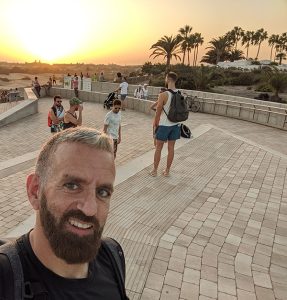How to Write an Impactful Report in 2024

Organizations work hard to measure their impact — and sharing that impact with others is essential.
Knowing when to write an impact report and how to do so effectively is crucial for meaningful stakeholder engagement and trust-building. Beneficiaries, donors, stakeholders, employees, and partners are increasingly looking for organizations’ impact — not just in their industry, but relating to the world at large.
An impact report is a tangible way to shine a light on your company’s contributions and enhance your reputation. It’s a transparent way to showcase your progress toward social and sustainability goals, while strengthening relationships with your key stakeholders.
However, it’s not just throwing together eye-catching pie charts. An effective organizational impact report requires a compelling blend of data, storytelling, and design. What you say and how you say it matters.
If you want to effectively communicate the difference you’ve made — whether it’s on the solution you’re providing, the people you’re helping, the issue you’re addressing, or the social and environmental contributions you’re making — here are some tips for writing an impact report in 2024.
1. Understand your audience and objectives
Before delving into the report, take the time to clearly define your objectives and identify your audience. Determine what you want to achieve with the report and who you want to engage. Are you addressing investors, donors, customers, or the community? Will you highlight your company’s move toward carbon neutrality or address progress on DEI targets? Understanding your audience’s interests and expectations will shape the structure and tone of your report.
2. Conduct a materiality assessment
A materiality assessment is used to identify the most important social and environmental issues for your organization. Start by engaging with beneficiaries, employees, partners, and community members to understand their expectations and concerns. Ensure that the stakeholders involved with the materiality assessment are an accurate representation of the communities your organization is impacting.
You can also utilize the data you’ve gathered from your materiality assessment to pull out key stories from stakeholders. Stakeholders love to see how they’ve contributed to your organizational impact, and their stories will make the impact report even more compelling.
3. Gather comprehensive data for impact evidence
Collect data and measure your impact on the identified issues of your impact report. This can include tracking metrics such as:
- Economic empowerment and growth
- Community engagement
- Qualitative feedback from beneficiaries
- Job creation and upskilling
- Employee and leader diversity
- Social impact metrics
- Environmental sustainability measures
- Carbon emissions and waste reduction
Data collection can be done through various methods such as surveys, audits, or interviews. Ensure data collection is reliable, consistent, and accurate, which will lead to a strong impact report.
Once you’ve gathered your data, you can begin utilizing data visualization techniques to present complex information in a clear, compelling manner. Visual elements such as charts, graphs, and infographics will make your impact report more engaging and accessible to readers — allowing them to grasp the information quickly and easily.
4. Align your impact reporting with measurable global standards
An impact report should define clear, measurable objectives aligned with your company’s mission and broader impact goals — but it should also evaluate your organization’s effectiveness against set objectives. Benchmark and align your data with international standards such as the United Nations’ SDG (Sustainable Development Goals), the Impact Management Project framework, the IRIS (Impact Reporting and Investment Standards), or the GRI (Global Reporting Initiative).
Measuring your progress against global standards lends credibility to your impact report while enhancing transparency for your key stakeholders. Be honest about your organization’s achievements, challenges, and areas for improvement. Address any shortcomings openly and outline your strategies for addressing them. By showcasing transparency and accountability, you build trust with your stakeholders and demonstrate your commitment to making a positive difference.
5. Highlight commitment from your leadership team
Your senior executives or CEO should provide a letter reinforcing the mission and context of your impact report. This letter is an opportunity for leadership to express gratitude to stakeholders, reflect on achievements, and outline your company’s future goals. A personalized message from your CEO also adds authenticity and credibility to your impact report.
Writing an engaging impact report in 2024 requires careful planning, alignment with measurable standards, and strategic storytelling. By following these five steps, you can design a report that connects with your stakeholders, drives meaningful engagement, and enhances your reputation as an organization committed to positive impact.
About Inclusion in Progress
Inclusion in Progress is a global DEI consulting firm that specializes in talent retention strategies for distributed teams. IIP works with multinational organizations to improve inclusive communication skills between distributed team members, to retain diverse talent and reduce turnover, and to build a culture of inclusion that enables a company’s competitive edge in the future of work. Get in touch with Inclusion in Progress for our bespoke consulting, training, speaking and workshops.






























































